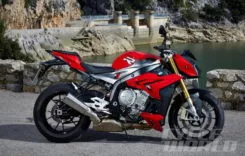Ron Finch’s Custom Chopper



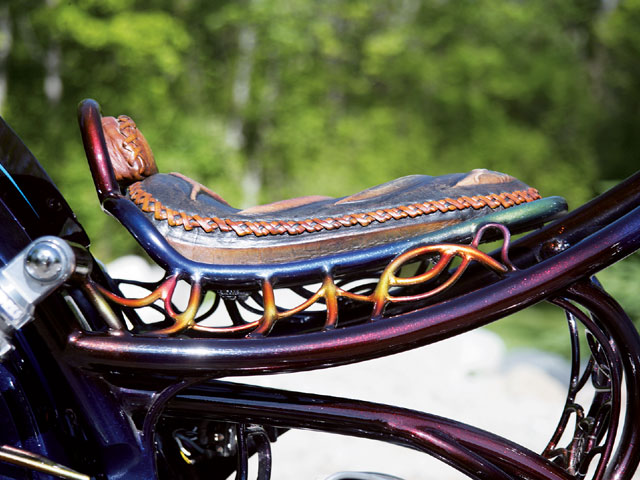






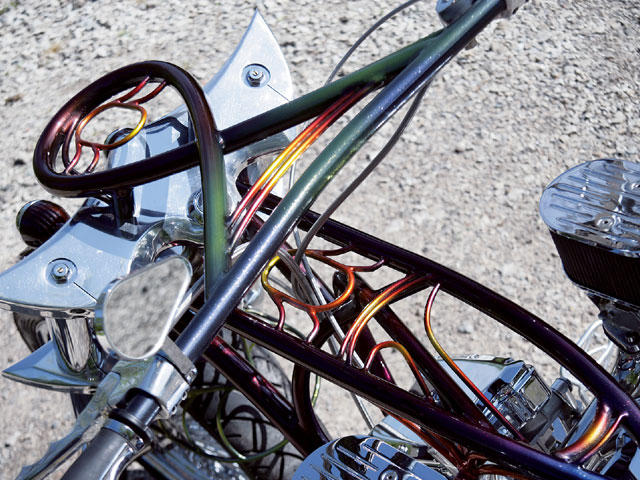
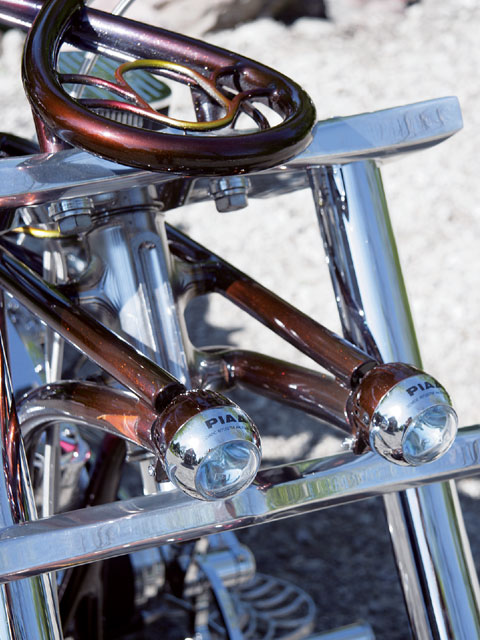
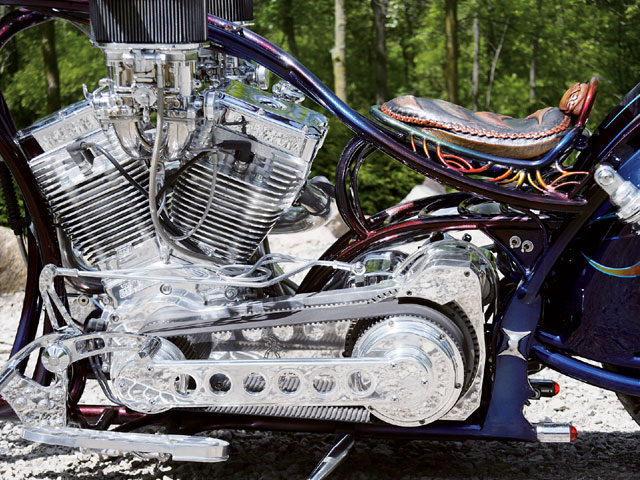



Ron Finch has been referred to as “The Legend”-not only as a builder of custom motorcycles, but also as an artist. He started Finch’s Custom Styled Cycles in 1965 in a small building in Pontiac, MI. Three years later he married his wife Ruth, and together they built the business. In 1972, he moved to Auburn Hills, MI, and a new facility where he could meet with and serve his customers better. Ron incorporated his love of metal to add sculpture to the architecture of the building. His uncanny vision for different uses of scrap material led him to use large chunks of scrap glass in the corners of the building, allowing diffuse light to permeate the shop. As a result, the building is sometimes referred to as “Finch Castle.” It was here that Ron and his crew, the Finchmen, worked for almost 30 years building, painting, repairing, and selling parts and accessories.
In the spring of 2001, the Finches sold their property and moved into semi-retirement to spend more time with their kids and grandchildren. Ron has since built another studio, complete with a deck, ramp, and bridge he constructed out of scrap metal he found. It was a place where he could continue his specialty work without the pressure of retail sales. He now focuses his efforts on painting and building custom bikes. Ron’s distinctive gift for metal fabrication and engineering has led him to design and build one-of-a-kind frames, frontends, gas tanks, and exhaust systems, along with numerous unique but functional parts and brackets. His talent continues with his metal sculptures and paintwork. His ingenuity and creativity have brought him accolades from all corners of the globe.
Ron’s first love is motorcycles, and his focus has been from the perspective of art in motion. It was all of these qualities that led the Discovery Channel to invite Ron to compete on the Biker Build-Off TV show. Back in 2004, he and his crew set out to create a rolling sculpture that featured a one-of-a-kind frame which gracefully crossed over the motor and extended through the frontend, then protruded through the front and housed two PIAA mini lights. The custom they created was dubbed the “Double Cross” due to the crossover design that is carried through the frame, exhaust, handlebars, and accessories. The gas tank and the oil bag were cleverly concealed in the rear fender, with the gas portion on the top. Forming a one-piece section, the sculpted rear fender flows into the twin-tube asymmetrical extended swingarm that’s outfitted with traditional vertically mounted shocks the way the suspension gods intended. Ron hand-bent and welded the fender struts that are prominent on the bike’s left side. Formed by Ron and posing as a front fender is a latticework of metal rod that sits above the tire. He used metal rod for other detail pieces on the bike, such as the secondary belt guard that flows into the rear fender, as well as the perch for the seat pan that seemingly sprouts from the backbone.
The lack of a gas tank in the usual place above the backbone highlights the polished S&S; 113-inch EVO-style motor. As if the motor needed any more attention, Ron decided to use dual Weber downdraft carburetors mounted on two huge vertically oriented intake manifolds that enter the mill from either side. This adds to the look of brute strength this bike gives off. Spent exhaust gasses follow a dizzying path as the Finch-designed pipes twist forward and back while crossing each other at the same time. Fins were added at their tips for extra visual dimension. The pipes were coated with Jet Hot, providing heat resistance while maintaining a polished appearance.
On the left side of the bike, the crankshaft is hooked up to a Barnett Scorpion clutch via an open-belt Karata primary drive. Transmission duties are handled by a right-side-drive Baker Drivetrain six-speed gearbox that sends a secondary drive belt to the GMA rear pulley. Speaking of the pulley, it also serves as the floating brake rotor. This arrangement really cleans up the left side of the bike. A very unique set of floorboards, in the shape of a boot, was designed by Ron and fabricated by Mark the Welder. More rod-work magic was performed on the brake pedal and the shifter linkage connecting the left foot control to the transmission. Custom-bent loopy handlebars with the Double Cross motif sit atop custom-cut triple-trees that hold a set of Kosman inverted fork legs. Securing the rubber-and in keeping with the look and theme of the bike-a set of 80-spoke laced wheels was used. Custom-stitched crosses on the perimeter, as well as Finch’s moniker, were sewn onto a leather seat that also includes a mini-backrest down low to keep you on the seat as you twist the wick.
This current Finch creation was completed with one of Ron’s signature paint jobs. He loves to blend colors and use multiple effects, such as the scallops on the rear section that follow the contour of the tanks and fender. This bike is beautifully accented with old-style pinstriping, an artform that Ron hopes to keep alive. The frame and handlebars are also highlighted with blends of color to complete the picture. Every time you look at this bike, you see something you may have missed the first time around. Not bad for a bike that took three weeks to build under the pressure and deadlines of a TV production schedule.
During the 2005 Biker Build-Off finale in Las Vegas, Ron was honored with the “Biker Blacksmith” award for his extreme metal-fabrication skills. The award was decided upon by an expert committee that considered all 24 of the bikes in the Build-Off series. Some have labeled Ron’s work as too extreme, but he claims his rolling sculptures exemplify the freedom and individualism associated with the motorcycle lifestyle. We tend to agree.



